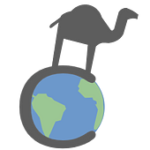A Perfect Travel Day Includes Lots of Unplanned Adventure
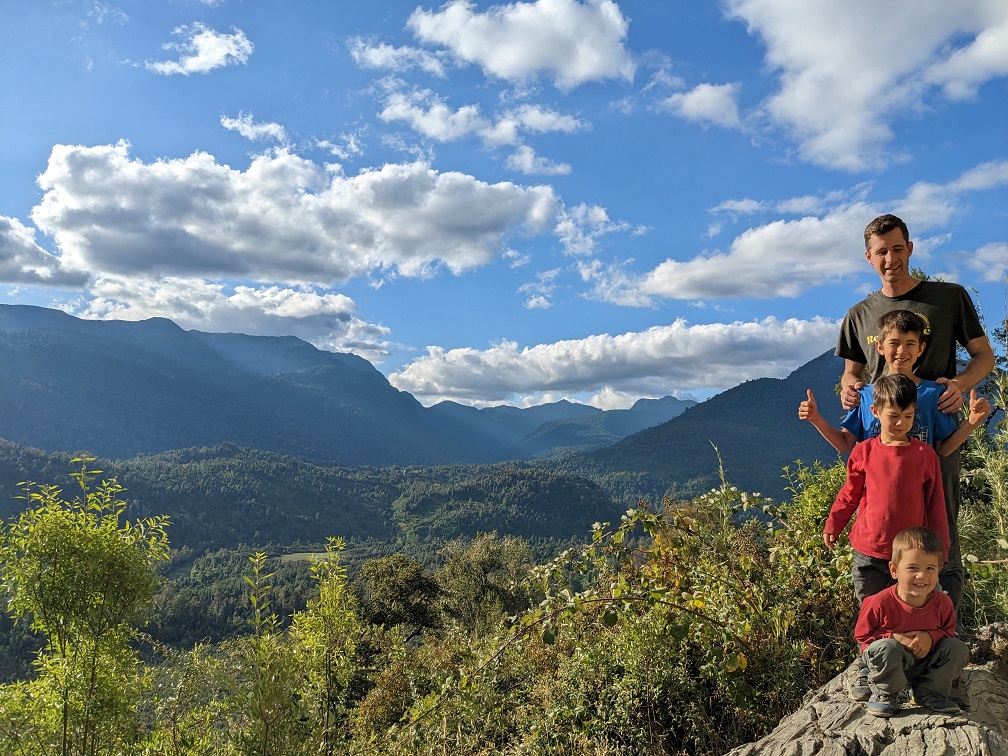
We recently came to the end of a day exploring southern Chile and said to one another, “That was the perfect travel day.”
Some may picture a perfect day of vacation as lounging on a white sand beach, feet up and mixed drink at hand. Or maybe it’s a jam-packed day hitting up all the must-see spots and Michelin-rated restaurants. Here’s what made our “perfect travel day” so wonderful for us.
From Bus Reliance to Auto Independence (A Little Backstory)
Three days before our perfect travel day, we decided to rent a car. For about a week, we’d been car-less. We had just endured a full-day, five-leg plane and bus transit ordeal and wished to avoid doing the same for our next trip.
Our next destination was Coñaripe, a little town that Google Maps said was 2.5-hours away. But when I clicked the public transit option, Google couldn’t find a way. Scouring the regional bus and international transit sites, I still couldn’t find any routes, even zigzagging between the bigger towns.
We figured we could probably wing it like we did last time, taking the local buses that didn’t sell tickets in advance online. But the thought of another long day lugging heavy bags and three squirrely kids around on buses made us groan.
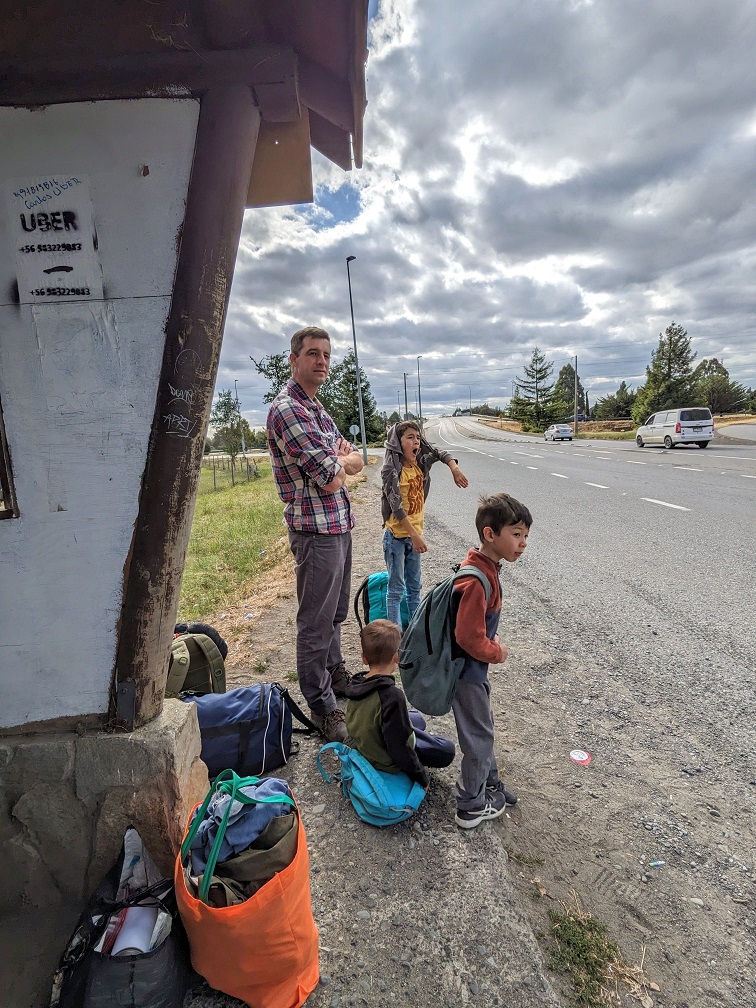
So, three days before our perfect travel day, we sat outside a little juice stand in the middle of a long bike ride to a lakefront beach and booked a rental car online. Getting that rental paid dividends, as you will find out shortly.
A Leisurely Departure and a Coffee Break
It’s the morning of our perfect travel day, though we don’t know it yet. We take our time packing up. No bus to catch.
Today, we’re taking the scenic route, around a couple lakes to the Huilo-Huilo Nature Reserve and then to our next cabin. The boys take another spin on the bikes around the property.
We say goodbye to Sergio and Paula, our hosts, and Sergio offers us a bottle of their homemade red wine vinegar for the road. Since we have a car to hold extra stuff, we don’t turn him down. Finley has us take a picture of him holding the dog Martín’s gimp leg. We walk across the campground to the other cabins, where we’ve made friends with a Chilean-Brazilian couple and their eight-year-old boy who are spending their summer holidays here. “Let us know when you get to Santiago,” they say. “We’ll show you around.”

As we roll out the gravel driveway, I connect my phone with the car speakers. I pull up the song “Grita Tierra” and we wind our way through the fields of horses and cows, forested hills, and sparkling lake views to the chant in Spanish, “Shout, earth! Sing your song. I want to see your dance of life, full of color.”
We pass by a local bus chugging along. “That could’ve been us,” I say. I’m so grateful to have escaped bus routes for a few days.
A tourist map shows a scenic point, Cajones de Cerillos, a bit off the main road. “Let’s go there!” I suggest. We must take advantage of the ability to stop anywhere.
Cajones de Cerillos turns out to be fast-flowing river in a deep gorge laced with cooled volcanic rock. To get there we cross a one-lane wooden bridge that three construction workers are fixing. Some of the wooden cross-slats are missing, one worker warns as make our way across. Our mothers would not approve of the bridges we have crossed in South America.
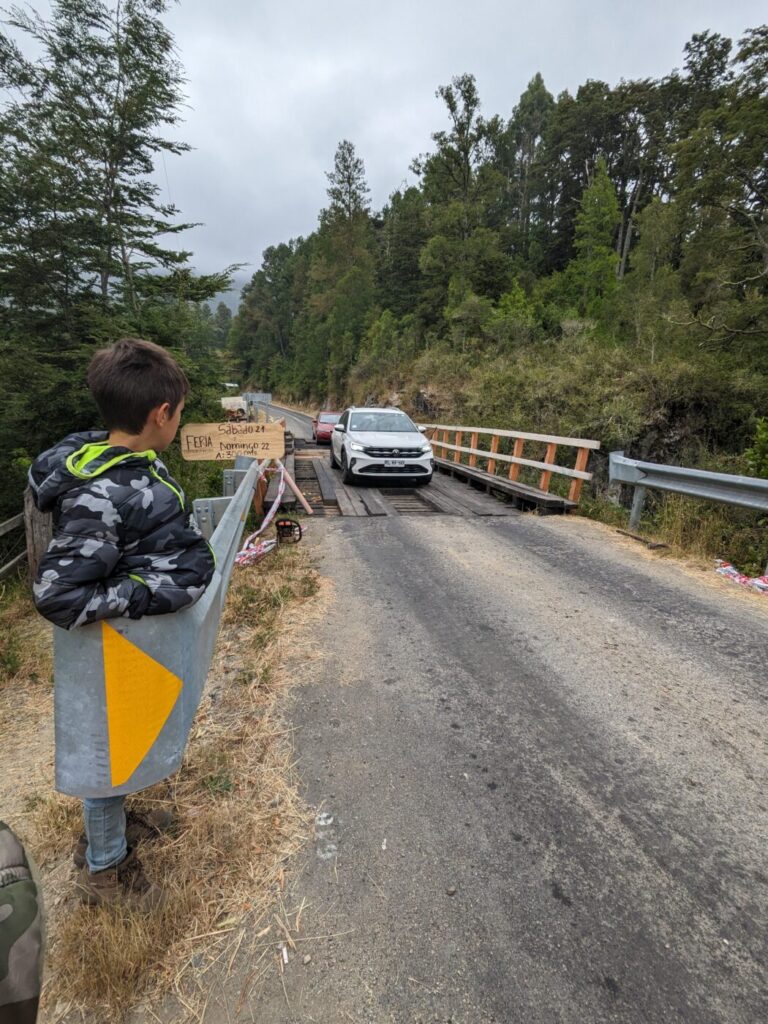
We stop for a mid-morning coffee break in Futrono, the biggest town around the lake Lago Ranco. Café Consentido exceeds our expectations with a forest fruit tea infusion, mochaccino, chai hot chocolate, cinnamon roll, and two kinds of kuchen (a local baked good that is a cross between a pie and a tart). We also pick up some marmalade made with local fruits, mora (blackberry) and rosa mosqueta (rosehips).
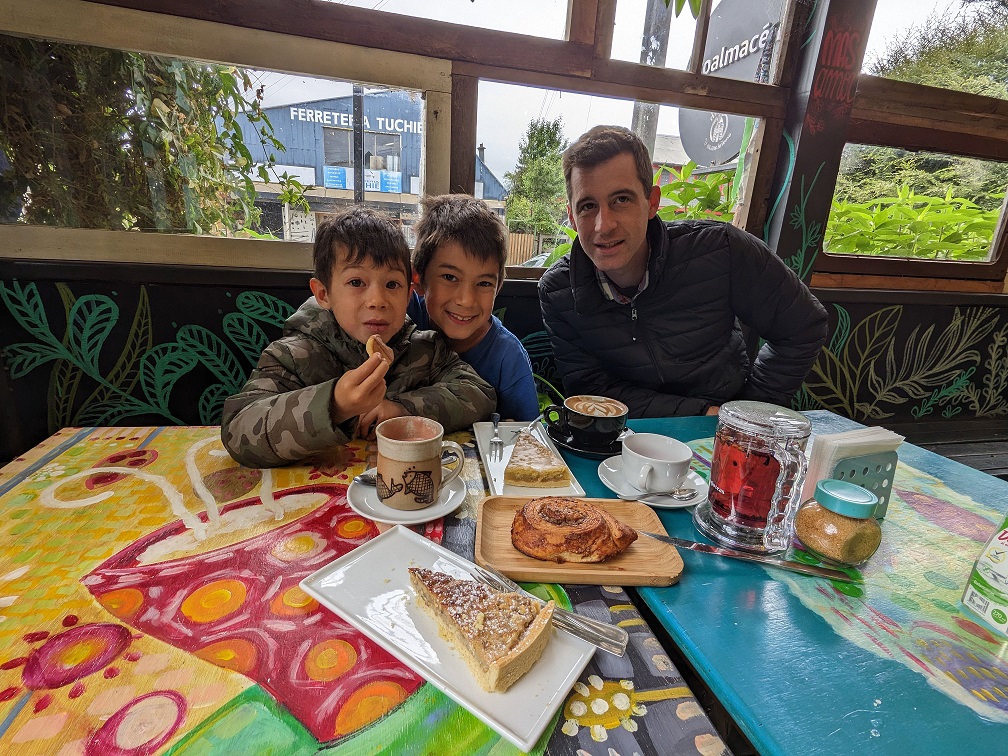
Lunch with a View and Berry Picking
After some more driving we stop at a mirador (lookout) overlooking Lago Panguipulli. Across the lake, Volcano Mocho Coshuenco looms, a double-headed active monster that reminds us of how exposed we are to the whims of Mother Nature.
Chile has over 90 active volcanoes, monitored by a state-of-art network of geologists. As we keep driving, I notice signs saying ruta de evacuación (evacuation route) with stick figure people running down a volcano. Good to know.
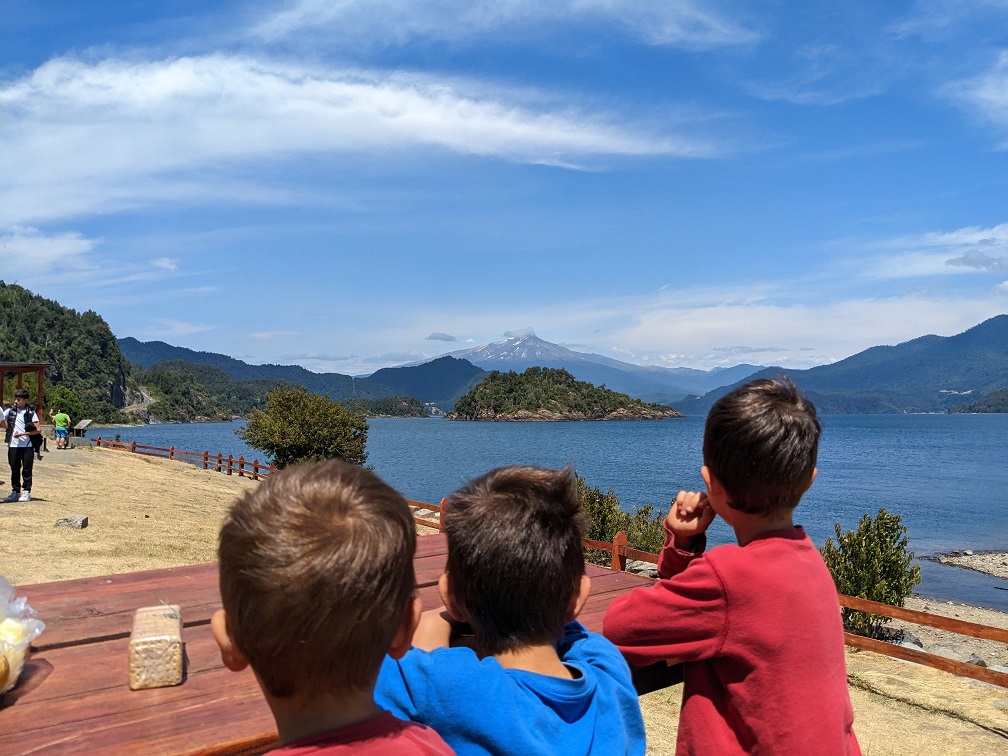
We break out crackers and cheese with merkén, a local spice mix made of smoked red pepper and garlic. I take a bag of strawberries and blueberries down to lake to wash.
Chile is where much of the fruit we get in North American winter comes from. Here it’s summer, and we’re getting to taste the delicious seasonal abundance that doesn’t get picked early to ship up north.
On the way back, I notice the bushes by the lookout have ripe blackberries! We fill our bag in a few minutes, despite a few thorns in the fingers and clothes.
Huilo-Huilo Nature Reserve
Huilo-Huilo Nature Reserve encompasses 100,000 hectares (247,000+ acres) of privately protected land used for ecotourism and conservation between Southern Chile and the Patagonian Andes. Here, the dangerously endangered huemul, the largest species of Patagonian deer, has been reintroduced.
We pay for our entry and take a short hike along the river, stopping by two spectacular waterfalls, taking a drink of turquoise river water, and playing in the old-growth forest. (It’s a debate what might be considered old-growth here in Chile. We’ve heard from our conservation-minded friends that there’s virtually no untouched forest in the country. All of the forests have at some point been cut down by indigenous tribes or colonizers for cultivation.)
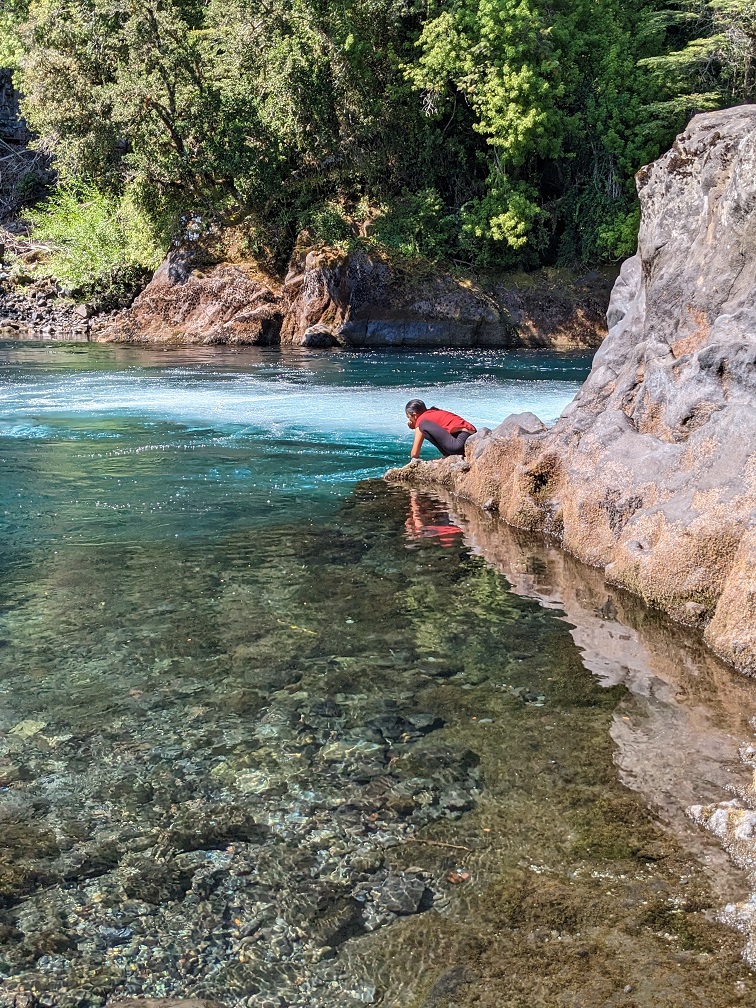
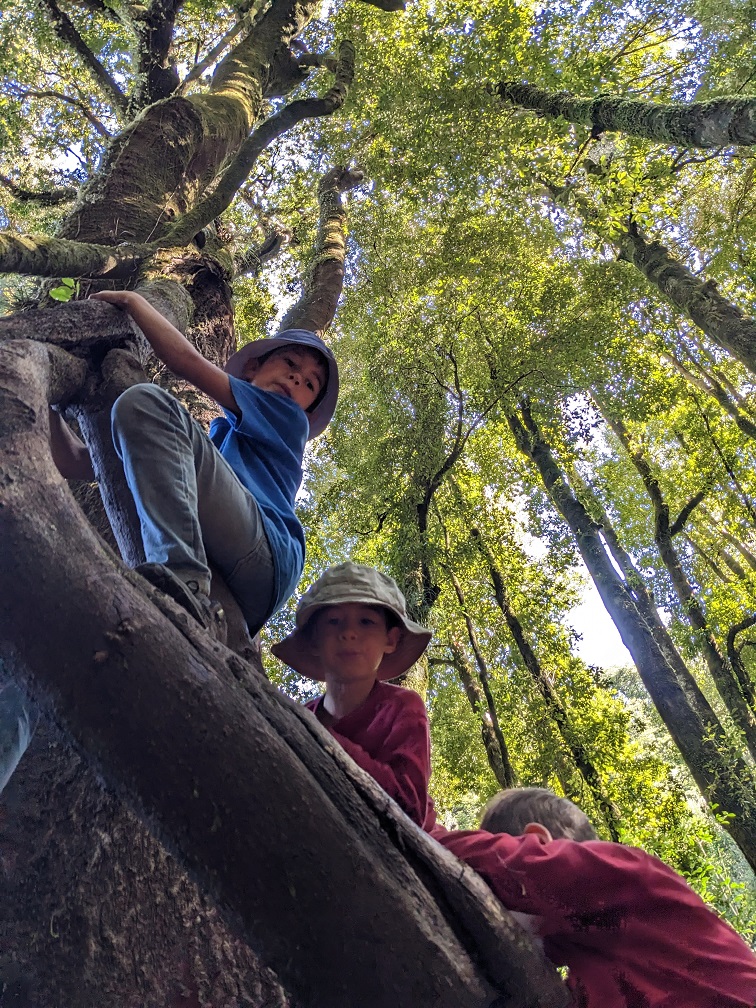
On the way out, we pick up a children’s book called Fochem, a whimsical story that includes fairies and gnomes about the reintroduction of huemuls in the park. I can’t resist getting a physical book after so many months of reading from screens.
The Road Less Taken
Our final destination for the day lies on the other side of some mountains. To get there we can take the paved highway around, which Google and our last host both recommend. Or we can take a smaller, unpaved road through the mountains which Sergio described with scrunched face and shoulders as angosto – narrow.
“Off the beaten path!” Matt clamors. He swerves right as Google orders us to go straight ahead.
Soon, we experience firsthand what Sergio was warning about. The pavement disappears and not long after the left shoulder drops off precipitously into a shining blue lake below. There are virtually no houses and no signs of civilization.
Since it hasn’t rained recently, our car throws up clouds of road dust, which then settle on its white exterior. We rattle along the gravel for a while until I spot, up ahead, a little wooden sign: Mote con Huesillo. I’ve heard about this traditional Chilean treat, and, since the day is all about adventure, we pull to a stop.
Two black-haired children around three or four years old play on the doorstep of a little shack. Two women emerge from inside. They have exactly two servings left of mote con huesillo, and we order them both.
Mote is Spanish for barley and huesillo is dried peach. The huesillo is boiled until it renders a fruity liquid. Then sugar and cooked barley are added. The whole thing is served chilled. It’s a hit with our crew.
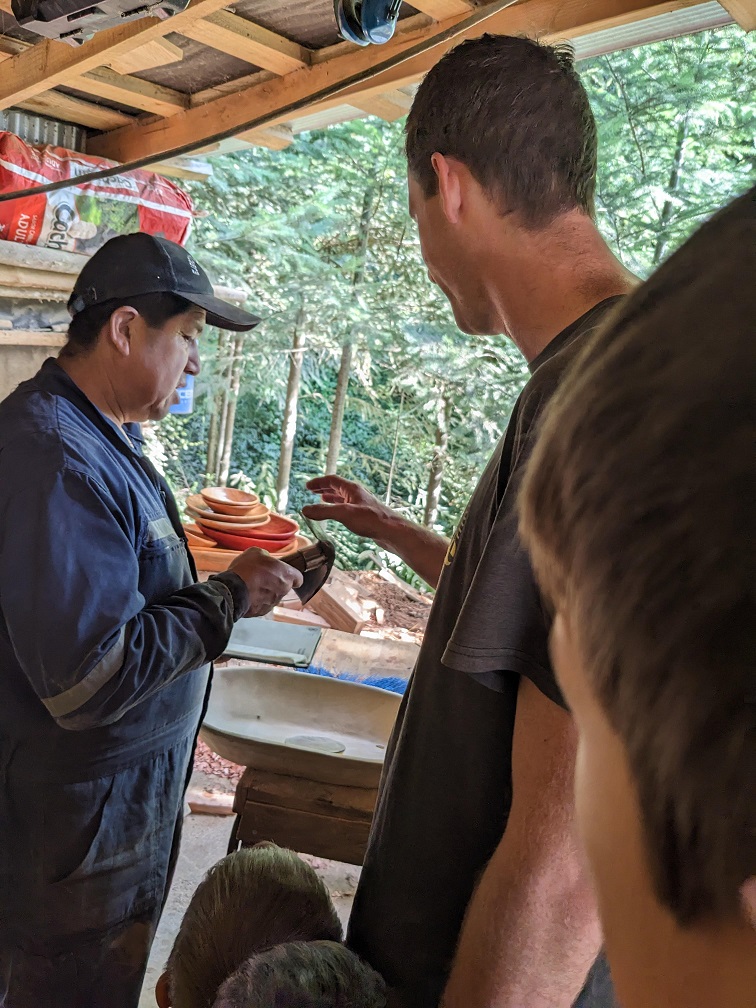
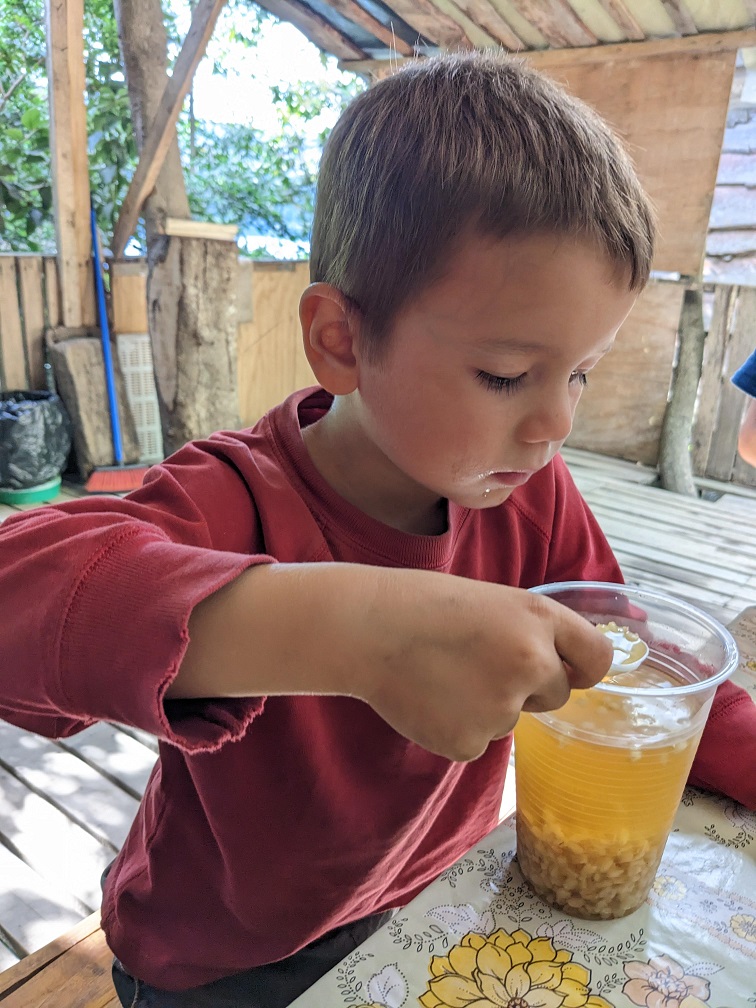
As we’re finishing, a man in coveralls appears from across the street. He’s a brother to one of the ladies in the shack and has a woodworking shop. Would we like to come see? We oblige him, though with our limited carrying capacity we don’t intend to buy anything.
Benedicto shows us his shop – stools carved out of a single piece of wood, cured wooden platters, handmade signs on the walls saying “Jesus te amo” (Jesus loves you) and “Gloria a Dios” (Glory to God). Matt takes immediate interest in the wood working tools.
We apologize for not being able to buy anything. “No, no,” Benedicto says in Spanish. “Everything has value. This conversation, your visit.” We pile back in the car, grateful for unplanned stops like this that make the long, dusty drive so worth it.
Indebted
Coming down the other side of the mountain, it’s already getting close to sunset. We pull into a lone open restaurant along the way promising comida casera (home cooking).
While our order is prepared, we wander the property, which is also where the proprietors live. The boys admire the baby chicks with their mamas, pick apples, and pet the cats.
The food, when it comes out, is abundant and delicious: humitas (something like a Mexican tamale), pan amasado (homemade fried bread), local salmon (the environmental impact of salmon fisheries in the area is another story), vacuna (beef), and a salad with more variety of veggies than I expect.
We also order two juices of fruit names we don’t recognize (it’s a day to be adventurous!). They turn out to be elderberry and Chilean guava berry (reminds me a bit of Juneberries).
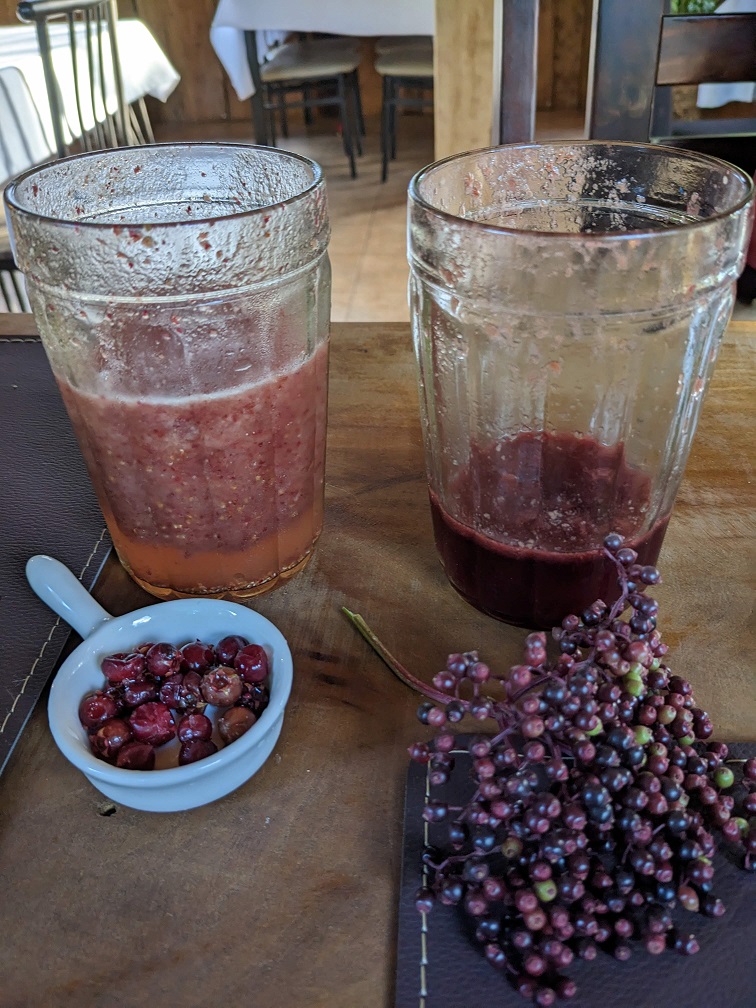
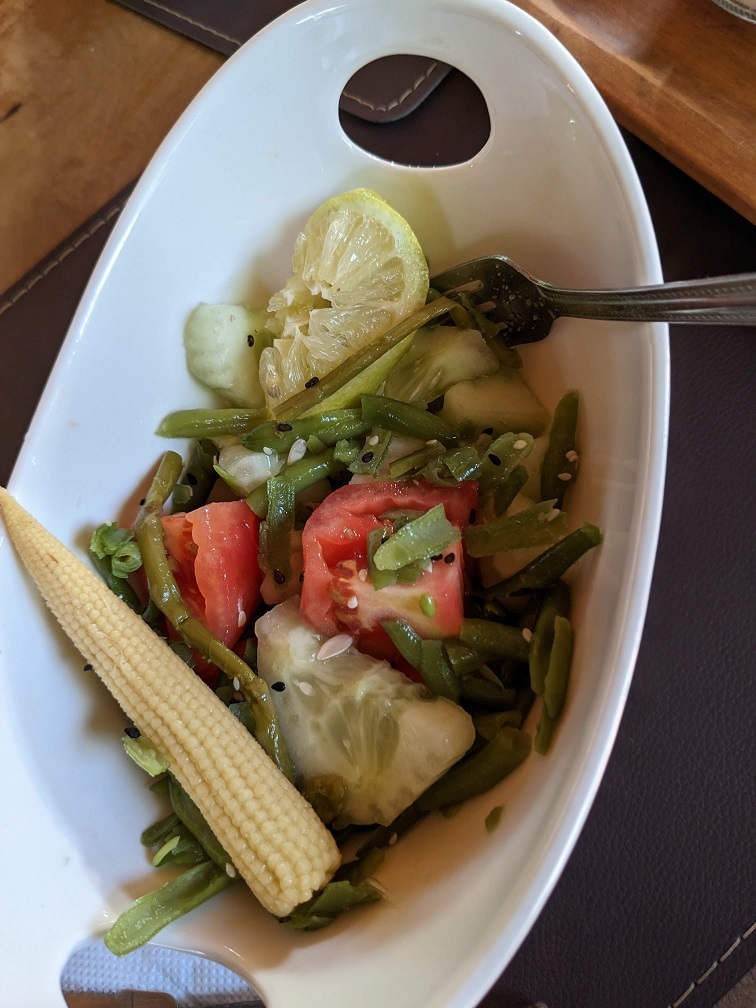
When it comes time to pay, we hit a wall. They don’t accept plastic. We scrounge around for our remaining pesos but it’s not enough. “How about a transfer?” our server asks. We don’t know how to do a transfer from our bank in the U.S.
“Well, you can go down the road to the corner store and take out money there,” she says.
It turns out the corner store has no ATM, as we expect, but functions as a Cajera Vecina, a neighborhood cashier, where folks can make payments and take out money from their Chilean bank accounts. The lady at the counter can’t do anything with an American bank account.
The nearest ATM, she says, is 30 minutes away. We look at the clock. It’s nearly 9 pm. We explain our situation and ask if we can make a payment with our debit card and she can give us cash back. “Well, to save you… okay,” she obliges. Whew! To show our profound thanks we pick up some groceries from the store.
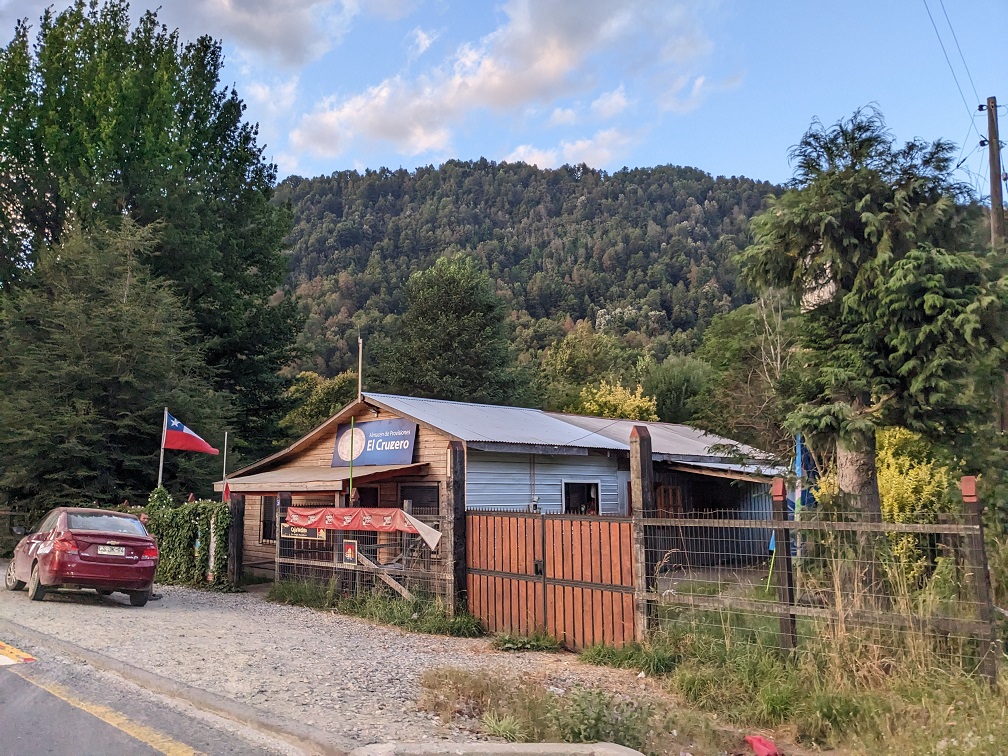
Finally back on the road after canceling our debt to the restaurant, we admire the valley in the deepening dusk.
“There’s a cow up ahead,” Oliver chirps matter-of-factly. Just in time, Matt realizes he doesn’t mean up ahead in the fields, but straight in front of the car. He hits the brakes and the cow ambles away.
And so, full with local food, gorgeous landscapes, and stories to tell, we pull in to our next cabin as night falls, look up to a sky full of stars, and end our perfect travel day.






